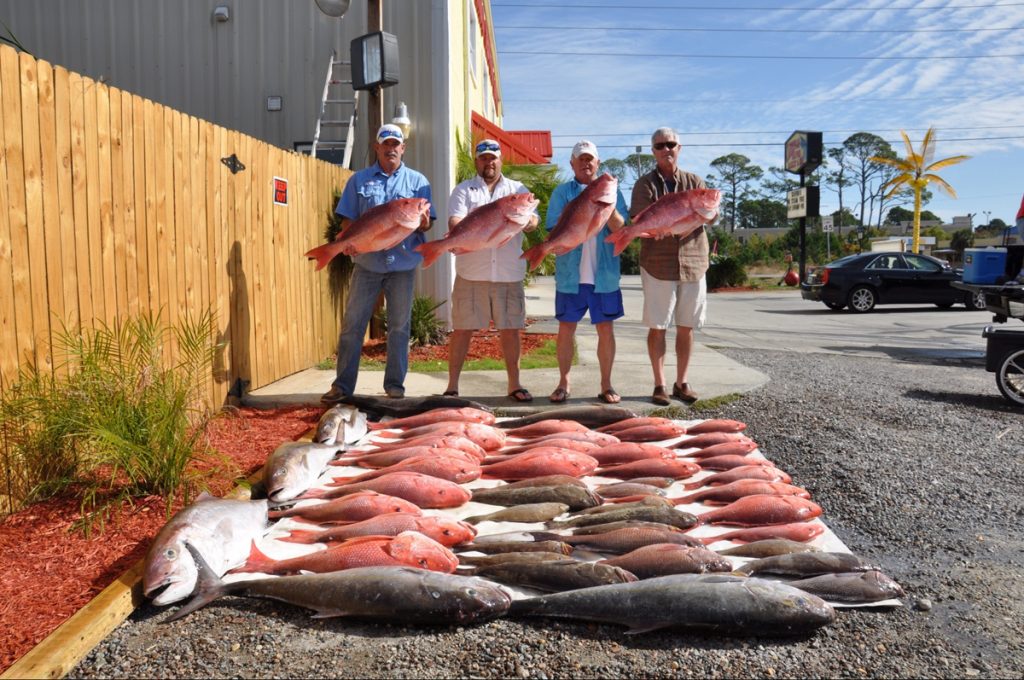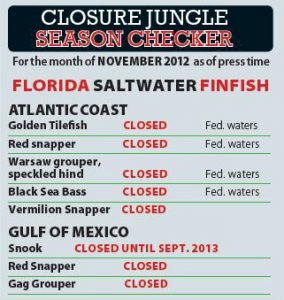December 07, 2012
By Jeff Weakley
How Did Florida Anglers Stack Up?
 Private catches like this are a pittance compared to commercial take. Inset, fed report.
Private catches like this are a pittance compared to commercial take. Inset, fed report.
In 2011, the vast majority of fish landings in the U.S. were commercial catches delivered to ports in Alaska: 5.4 billion pounds. Louisiana claimed a distant second with 1.5 billion pounds, followed by California with a half-billion.
That's according to the National Marine Fisheries Service (NMFS) Statistical Report Card for Fisheries in 2011. The “card” is actually 124 pages, but for your benefit, I'll attempt to render the most important details to one.
Recreational anglers nationwide landed 201 million pounds of fish. You, me and Rodney Rod-holder—we're guppies, plankton feeders.
Granted, Florida was at the top of the list of states for recreational landings by weight: 47 million pounds of fish kept, versus 17 million pounds for Lousiana.
As a producer of commercial landings, Florida was pretty far down the list; only one of our towns, Key West, made the list of top 50 U.S. ports by weight of commercial landings. Key West was number 48 on that list, with 14 million pounds, but number 20 on the list of top 50 by value, with $56 million.
Spiny lobster and shrimp landings no doubt contributed to Key West's disproportionate share of the value. Florida's 5.6 million pounds of commercial spiny lobster landings represent 88 percent of the U.S. catch for the species, and reflect $37.2 million in ex vessel prices. Shrimp landings nationwide were up 21 percent over 2010, with 312.7 million pounds worth $518 million.
Keep in mind Florida's shellfish are a tiny piece of the complete commercial landings. Pollack was the top U.S. commercial seafood product by weight in 2011 at 2.8 billion pounds. Pollack is a North Pacific bottom fish hauled into places like Dutch Harbor, AK (No. 1 port, the goliath grouper of fishing holes).

Inexplicably, a southern species familiar to Florida anglers, menhaden, ranked number two at 2.1 billion pounds. That surprising figure came as a result of dramatic increase in landings of Gulf menhaden,
up 66 percent from 2010. What's up with that? McPogy sandwich? We're still trying to figure it out.
Menhaden are used for meal, solubles and oil, with a small amount for bait. The species didn't even crack the list of top 10 seafood products by value. Number one was crab at $650 million, followed by salmon ($618 million) and scallops ($587 million; chiefly a north Atlantic product).
Another mildly alarming trend we noticed in the Report Card: Commercial landings of some Florida recreational favorites rose and in some cases doubled from 2010 to 2011.
Federal efforts to concentrate commercial landings in the hands of a limited few are obviously paying off. Meanwhile, the NMFS report card noted that recreational catch and effort for 2011 was down slightly over 2010. U.S. per capita seafood consumption was likewise down somewhat. Guppies are going hungry. —Jeff Weakley, Editor
Find the full report here.

